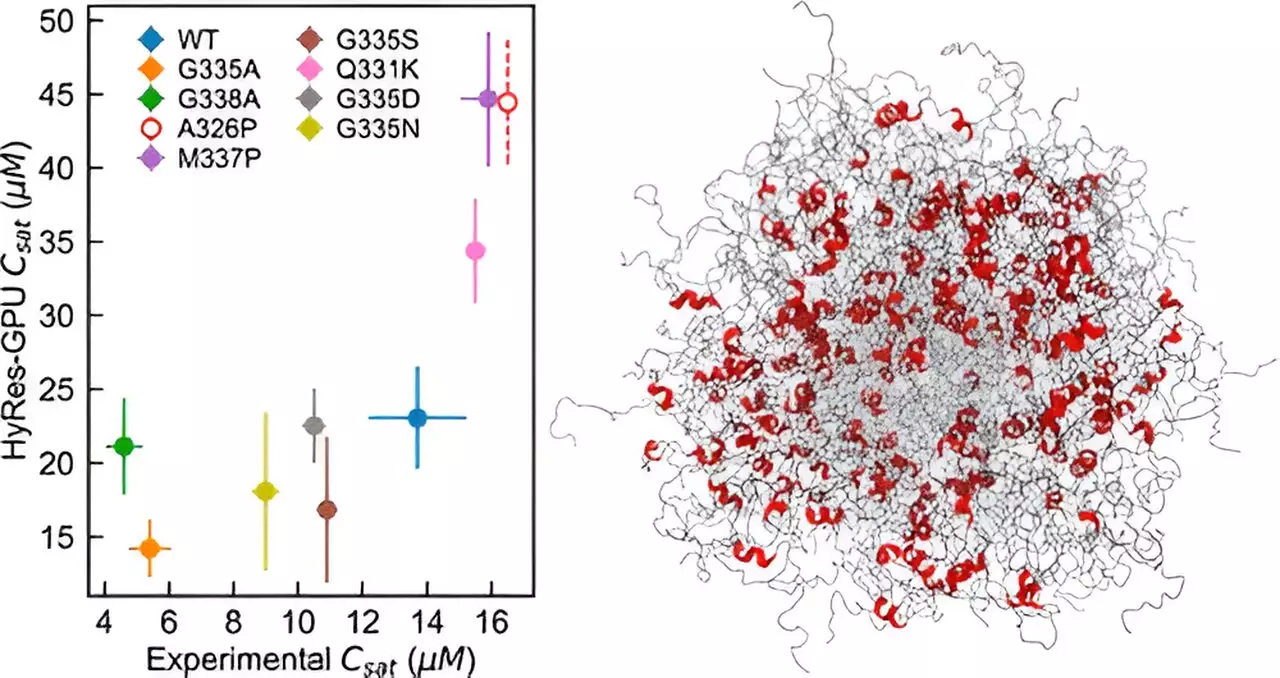A recent study conducted by a team from the University of Massachusetts Amherst has made a significant breakthrough in modeling and understanding the phase separation of intrinsically disordered proteins (IDPs). This phenomenon is crucial for subcellular organization and plays a vital role in numerous biological functions and diseases. IDPs are involved in cancer, neurodegenerative disorders, and infectious diseases, making up about one-third of the proteins produced by the human body. The identification of hidden features that are vital to the functioning and self-assembly of IDPs can provide valuable insights into the mechanisms underlying diseases. In this article, we will delve into the novel approach taken by the researchers to simulate phase separations mediated by IDPs and the potential implications for therapeutic strategies.
Traditionally, phase separation has been a well-known phenomenon in polymer physics. However, it was only about 15 years ago that researchers discovered its prevalence in biology. Phase separation can be observed under a microscope, but understanding its molecular-level mechanisms remains challenging. Over the past decade, scientists have begun to uncover the pivotal role of disordered proteins in driving phase separation, particularly in cancer and neurodegenerative disorders. This knowledge has paved the way for novel research avenues aiming to dissect the molecular processes underlying this phenomenon.
The University of Massachusetts Amherst team, led by Professor Jianhan Chen, developed a groundbreaking simulation approach to study phase separations mediated by IDPs. Traditionally, simulating this process accurately has been a daunting task due to the complexity involved. However, the team’s computational biophysics and biomaterials lab developed a hybrid-resolution (HyRes) force field that combines accuracy and computational efficiency. The unique feature of this model lies in its ability to accurately describe peptide backbone interactions and transient secondary structures, enabling the modeling of liquid-liquid phase separation mediated by IDPs. This advancement fills a crucial gap in the field of IDP phase separation simulations.
Using the HyRes force field, Chen and his team conducted simulations to uncover the key factors governing the stability of IDP condensates. Their findings represent a significant milestone in the understanding of the molecular mechanisms behind IDP phase separation. Surprisingly, the simulations accurately captured the impact of even a single mutation or residual structures on the phase separation process. This insight highlights the potential of the HyRes model as a powerful tool for investigating the impacts of various factors on IDP phase separation, shedding light on the development of therapeutic interventions.
The ultimate goal of this research is to develop therapeutic strategies for diseases associated with disordered proteins. Understanding the intricacies of phase separation can unlock new possibilities for disease management and treatment. Chen emphasizes the significance of this work, as important biological processes are believed to occur through phase separation. By unraveling the underlying mechanisms, researchers can gain valuable insights into controlling phase separation for scientific and engineering purposes, providing opportunities for targeted interventions and therapeutic effects.
Chen and his team are not halting their efforts at IDP phase separation simulations. They are now focusing on applying the knowledge gained to larger-scale simulations involving more complex biomolecular mixtures. Specifically, they are constructing a similar model for nucleic acids, as phase separation often involves interactions between disordered proteins and nucleic acids. By broadening the scope of their simulations, the researchers aim to gain a comprehensive understanding of the molecular dynamics underlying phase separation and expand the range of potential therapeutic strategies.
The University of Massachusetts Amherst team’s innovative approach to simulating IDP phase separation has opened up new possibilities for understanding the molecular mechanisms of this process. By accurately modeling the interactions and behaviors of IDPs, researchers can gain insights into the underlying factors that govern phase separation and potential avenues for therapeutic interventions. This work represents a significant step forward in our understanding of disordered proteins and their implications in various diseases, offering hope for future advancements in disease management and treatment.



Leave a Reply